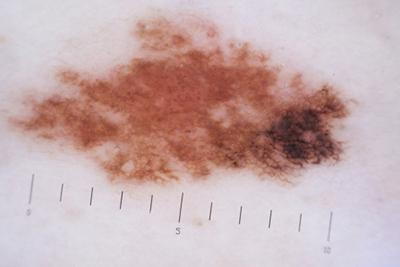
Warning Signs of Melanoma
Melanoma, a form of skin cancer, develops in melanocytes—the cells producing melanin, responsible for skin color. It's often linked to excessive UV exposure, genetic factors, and immune system irregularities. Suspicious moles, irregular growths, or changes in existing moles can indicate melanoma.
Excessive sun exposure, tanning beds, and a history of severe sunburns increase the risk of melanoma in Kissimmee and Ocoee, FL. Genetics play a role; individuals with a family history of melanoma face higher susceptibility. If you notice asymmetrical moles, irregular borders, varied colors, or moles bigger than a pencil eraser, consult a dermatologist. Changes in texture or elevation should also prompt a visit.
Dr. Clifford Lober, a renowned dermatologist, specializes in skin cancer, including melanoma. Contact him if you notice concerning changes in moles or experience skin irregularities. Dr. Lober's expertise in diagnosing and treating skin conditions, including melanoma, ensures timely and accurate assessment, significantly improving treatment outcomes.
The 5 Warning Signs of Melanoma
Skin cancer can manifest in various forms, and being aware of the signs can aid in early detection and treatment. Five key signs of skin cancer in Kissimmee and Ocoee, FL, are asymmetry, border irregularity, color changes, diameter, and evolving moles. Early detection significantly improves treatment outcomes.
Asymmetry: Check for moles or spots where one half looks different from the other half. If you draw an imaginary line through the middle, the two halves might not match.
Border irregularity: Look for uneven or notched borders around moles. Instead of a smooth, round shape, they might appear ragged or blurred.
Color changes: Watch for moles with multiple colors or ones that have changed over time. Shades of brown, black, red, white, or blue could indicate an issue.
Diameter: Monitor the size of moles or spots on your skin. If they're more sizeable than a pencil eraser (about 6mm), if they're growing, it could be a cause for concern.
Evolving moles: Track changes in shape, size, color, or elevation. If a mole looks different from others, seek medical advice.
Melanoma: Diagnosis and Treatment
Dr. Lober diagnoses skin cancer through a skin exam, biopsy, and sometimes imaging tests. Dermatologists assess suspicious moles or skin changes, examining size, shape, and color irregularities. Treatment varies based on the stage of the cancer. Surgical removal is preferable for localized melanomas. Advanced cases may require additional therapies like immunotherapy, targeted therapy, chemotherapy, or radiation.
These advanced treatments target cancer cells, either by boosting the body's immune response or directly interfering with their growth. Regular skin checks, sun protection, and prompt consultation for any changes in moles or skin are vital. Collaboration between patients, dermatologists, and oncologists helps in timely detection and tailored treatment, increasing survival rates.
Please explore our website to learn about the conditions we treat and the services provided. If you have questions or concerns regarding melanoma in Kissimmee and Ocoee, FL, and want to schedule an appointment with Dr. Lober to discuss diagnosis, prevention, and treatment, call (407) 846-7166 to reach the Kissimmee, FL, office and (407) 656-9700 for Ocoee, FL.